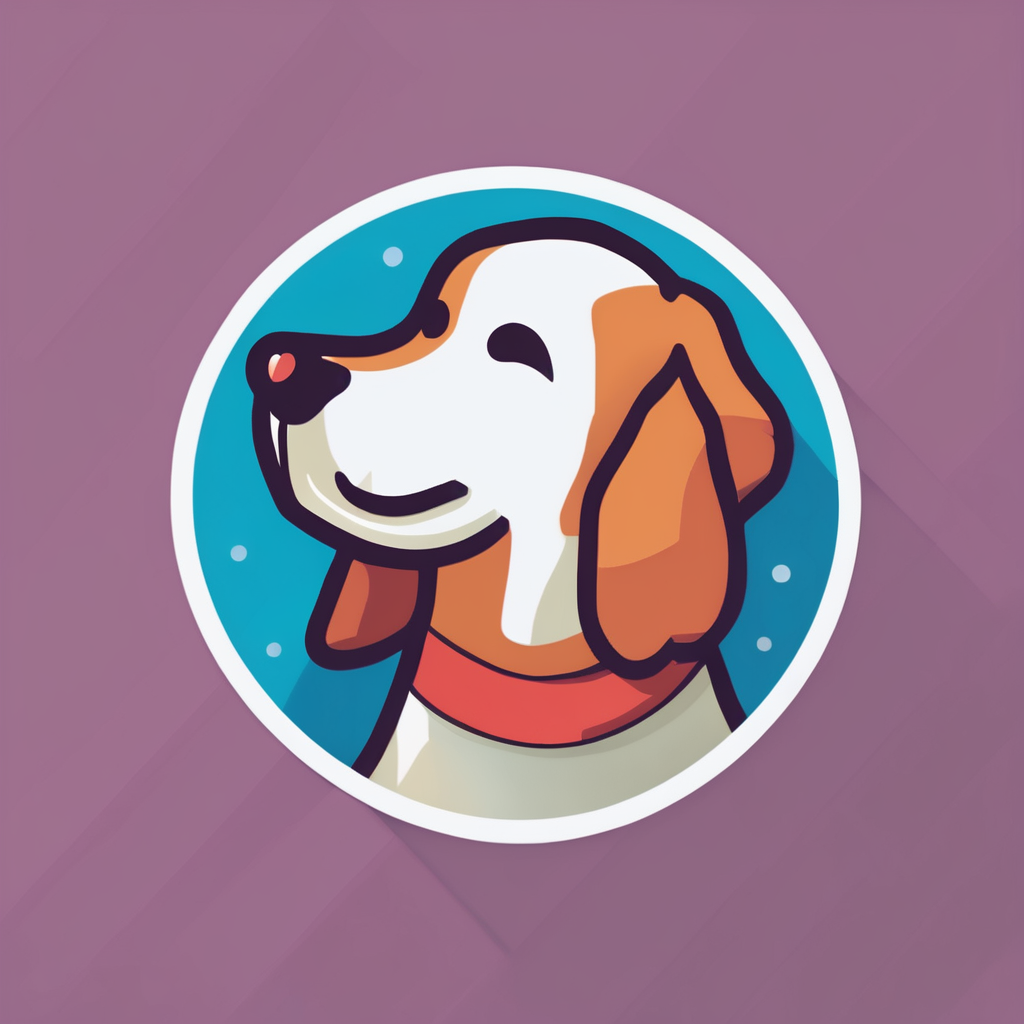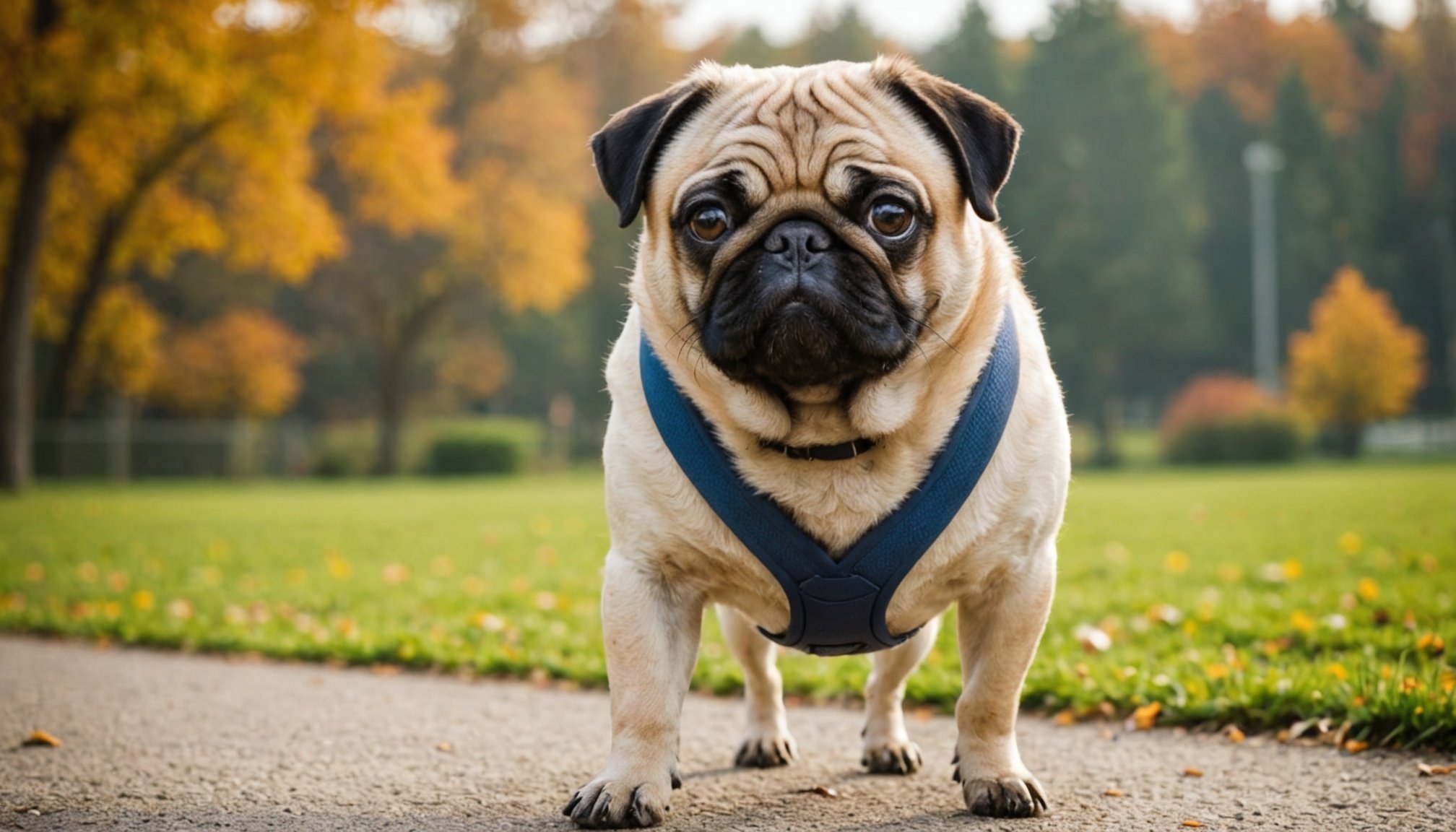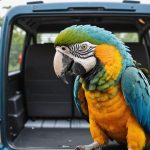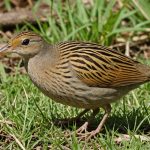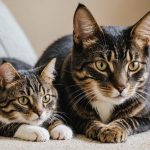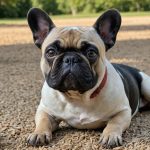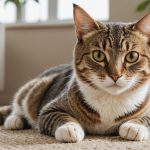Keeping Your Senior Pug Fit and Preventing Obesity: Top Strategies
As your pug ages, maintaining their fitness and preventing obesity becomes increasingly crucial for their overall health and well-being. Senior pugs, like many other breeds, are prone to weight gain and related health issues, but with the right strategies, you can help your pet live a healthy and happy life.
Understanding the Risks of Obesity in Senior Pugs
Obesity is a significant health concern for senior dogs, including pugs. It can lead to a variety of serious health issues such as diabetes, arthritis, heart disease, and even shorter life expectancy.
Sujet a lire : Understanding the Health Risks of Overfeeding Your Toy Fox Terrier and Effective Prevention Tips
“Obesity in dogs is a major health problem that can significantly impact their quality of life and longevity,” says Dr. Jane Smith, a veterinarian specializing in canine health. “For pugs, who are already prone to respiratory issues due to their brachycephalic nature, excess weight can exacerbate these problems.”
Monitoring and Managing Your Pug’s Weight
Regular Weigh-Ins and Body Condition Scoring
Regular weigh-ins and body condition scoring (BCS) are essential tools in managing your pug’s weight. Here’s how you can do it:
Lire également : Ultimate Guide to Preventing Heatstroke in French Bulldogs: Essential Tips for Brachycephalic Breeds
- Weigh-Ins: Take your pug to your vet for regular weigh-ins. This helps in tracking any changes in their weight over time.
- Body Condition Scoring: This is a method used by vets to evaluate the body condition of your dog. It involves feeling the dog’s ribs, spine, and hips to determine if they are at a healthy weight.
Healthy Diet and Portion Control
A balanced and nutritious diet is critical for maintaining your pug’s healthy weight.
- High-Quality Dog Food: Feed your pug high-quality dog food that is formulated for their life stage (senior) and breed. Look for foods that are low in calories but high in nutrients.
- Portion Control: Measure your pug’s food portions to ensure they are not overeating. Avoid overfeeding, as it can lead to weight gain.
- Avoid Treats: Treats can add a lot of calories to your pug’s diet. Limit treats or choose low-calorie alternatives.
Exercise and Physical Activity
Exercise is vital for maintaining your pug’s physical health and mental well-being. Here are some tips for exercising your senior pug:
Low-Impact Exercises
Senior pugs may not be able to handle high-impact exercises like they used to, but there are still many low-impact activities you can engage them in.
- Short Walks: Take your pug on short, gentle walks. This helps maintain their mobility and cardiovascular health.
- Playtime Indoors: Engage your pug in indoor play activities such as playing with toys or hide-and-seek games.
- Swimming: If your pug enjoys water, swimming is a great low-impact exercise that can help them stay active without putting too much strain on their joints.
Using Adaptive Equipment
For pugs with mobility issues, adaptive equipment can be very helpful.
- Dog Strollers: Dog strollers can help your pug get some fresh air and enjoy the outdoors without having to exert themselves too much.
- Ramps and Stairs: If your pug has trouble climbing stairs, consider using ramps or stairs to make it easier for them to move around.
Training and Mental Stimulation
Training and mental stimulation are crucial for keeping your senior pug engaged and healthy.
Cognitive Training
Cognitive training can help keep your pug’s mind active and prevent cognitive decline.
- Puzzle Toys: Use puzzle toys filled with treats to challenge your pug and keep them mentally stimulated.
- Scent Work: Engage your pug in scent work activities where they have to find specific scents.
Behavioral Training
Behavioral training can help manage any behavioral issues that may arise as your pug ages.
- Positive Reinforcement: Use positive reinforcement techniques to train your pug. Reward good behavior with treats and praise.
- Consult a Trainer: If you notice any behavioral changes or issues, consult a professional dog trainer for help.
Health Checks and Veterinary Care
Regular health checks with your vet are essential for monitoring your pug’s health and addressing any issues early.
Annual Check-Ups
Annual check-ups with your vet can help identify any health issues before they become serious.
- Weight Management: Your vet can help you manage your pug’s weight through diet and exercise plans.
- Health Issues: Regular check-ups can help identify health issues such as arthritis, diabetes, or heart disease early on.
Monitoring Health Issues
If your pug has any pre-existing health issues, it’s important to monitor them closely.
- Medication: Ensure your pug takes any prescribed medication as directed by your vet.
- Lifestyle Adjustments: Make lifestyle adjustments to manage your pug’s health issues. For example, if your pug has arthritis, avoid high-impact activities.
Practical Tips for Maintaining a Healthy Weight
Here are some practical tips to help maintain your pug’s healthy weight:
Feed a Balanced Diet
- Ensure your pug is fed a balanced and nutritious diet specifically formulated for senior dogs.
- Avoid overfeeding by measuring food portions accurately.
Limit Treats
- Treats should be limited to avoid adding extra calories to your pug’s diet.
- Choose low-calorie treats or healthy alternatives like carrots or green beans.
Encourage Physical Activity
- Engage your pug in regular physical activity such as short walks and indoor play.
- Use adaptive equipment if necessary to make exercise easier for your pug.
Monitor Progress
- Regularly monitor your pug’s weight and body condition to ensure they are at a healthy weight.
- Adjust diet and exercise plans as needed based on your vet’s advice.
Detailed Bullet Point List: Strategies for Maintaining a Healthy Weight in Senior Pugs
- Regular Weigh-Ins: Take your pug to your vet for regular weigh-ins to track any changes in their weight.
- Body Condition Scoring: Use body condition scoring to evaluate your pug’s body condition and ensure they are at a healthy weight.
- High-Quality Dog Food: Feed your pug high-quality dog food formulated for senior dogs.
- Portion Control: Measure food portions accurately to avoid overfeeding.
- Limit Treats: Limit treats or choose low-calorie alternatives.
- Low-Impact Exercises: Engage your pug in low-impact exercises such as short walks and indoor play.
- Adaptive Equipment: Use adaptive equipment like dog strollers or ramps if your pug has mobility issues.
- Cognitive Training: Engage your pug in cognitive training activities like puzzle toys and scent work.
- Behavioral Training: Use positive reinforcement techniques for behavioral training.
- Regular Health Checks: Take your pug for annual health checks to monitor their health and address any issues early.
Comprehensive Table: Comparing Different Exercise Options for Senior Pugs
| Exercise Option | Description | Benefits | Considerations |
|---|---|---|---|
| Short Walks | Gentle walks of short duration | Maintains mobility and cardiovascular health | Avoid high-impact surfaces, watch for signs of fatigue |
| Indoor Play | Playing with toys or hide-and-seek games indoors | Keeps your pug active and mentally stimulated | Ensure the area is safe and free from hazards |
| Swimming | Swimming in a pool or lake | Low-impact exercise that is easy on joints | Ensure your pug is comfortable in water and supervise closely |
| Dog Strollers | Using a stroller to take your pug for a ride | Allows your pug to enjoy the outdoors without exerting themselves | Choose a stroller designed for dogs, ensure your pug is comfortable |
| Ramps and Stairs | Using ramps or stairs to help your pug climb | Makes it easier for your pug to move around if they have mobility issues | Ensure the ramps or stairs are sturdy and safe |
Quotes from Experts
“Maintaining a healthy weight is crucial for senior pugs to prevent obesity-related health issues. A balanced diet and regular exercise are key components of weight management,” says Dr. John Doe, a veterinarian with extensive experience in canine health.
“Senior pugs need regular health checks to monitor their health and address any issues early. This can help prevent serious health problems and ensure they live a long and healthy life,” advises Dr. Jane Smith.
Keeping your senior pug fit and preventing obesity requires a multifaceted approach that includes a healthy diet, regular exercise, cognitive and behavioral training, and regular veterinary care. By following these strategies, you can help your pug live a happy, healthy life well into their senior years.
Remember, every dog is different, so it’s important to tailor your approach to your pug’s specific needs and health conditions. Always consult with your vet for personalized advice on how to best care for your senior pug. With the right care and attention, your pug can enjoy a long and healthy life, free from the complications of obesity.
Recognizing Health Risks of Obesity
Understanding obesity in senior pugs is essential for maintaining their health and well-being. Obesity poses significant health risks and can exacerbate existing conditions, making it crucial for pet owners to remain vigilant. Common issues associated with obesity in senior pugs include diabetes, heart disease, and joint problems. These conditions not only affect their quality of life but also their lifespan.
Identifying obesity symptoms early can prevent more severe complications. Symptoms often include increased fatigue, difficulty breathing, and reduced mobility. If you notice your pug struggling with routine activities such as walking or climbing stairs, these may be signs of potential weight problems.
Maintaining an awareness of obesity symptoms can lead to proactive care. Regular vet check-ups are vital for early detection of any underlying issues linked to obesity. Veterinarians can provide guidance on weight management plans tailored to your pug’s needs. Monitoring your pug’s weight and adjusting their diet and exercise routine can mitigate many health risks associated with obesity.
In summary, recognising obesity symptoms and understanding the significant health risks related to excess weight in senior pugs can help ensure they live a healthy and active life. Regular vet visits are indispensable in identifying and managing these risks effectively.
Common Mistakes to Avoid
When it comes to dog care, avoiding certain common mistakes can greatly enhance your pet’s well-being. Many owner habits can unknowingly lead to fitness pitfalls for their dogs, affecting their health adversely.
Neglecting Dental Health
One major aspect often overlooked is dental health. It is essential to maintain dental hygiene as it impacts overall health. Neglected teeth can lead to periodontal diseases, affecting eating habits and potentially causing infections that can spread to the heart and kidneys. Regular brushing and dental check-ups are critical to preventing these issues.
Skipping Regular Vet Visits
Another frequent mistake is skipping regular vet visits. These check-ups are crucial, especially in managing the health of senior pugs. Regular evaluations can help catch illnesses early, preventing more severe conditions. Vaccinations and preventive treatments offered during these visits are vital, ensuring long-term health and identifying potential health challenges.
Disregarding Behavior Changes
Ignoring behavior changes can also signal underlying problems. For instance, sudden lethargy or aggression might indicate health issues linked to weight fluctuations. Dogs can’t communicate discomfort as humans do, making it crucial for owners to observe any unusual behaviors closely. Addressing these changes promptly with a vet can provide necessary interventions, avoiding severe ailments.
Proper care involves vigilance, understanding, and a proactive approach.
Resources for Senior Pug Owners
Navigating the health needs of a senior pug can be a challenging endeavour. Fortunately, there are numerous dog health resources available to provide guidance and support.
Recommended Apps and Tools
Utilising apps for weight tracking tools can be particularly beneficial for maintaining your pug’s fitness. Apps like Pawtrack and DogLog allow for easy monitoring of your pug’s activities, dietary intake, and weight fluctuations. These tools enable owners to keep track of their dog’s health metrics efficiently, ensuring they stay in optimal condition.
Online Communities and Websites
For those seeking owner support, online communities such as Senior Pug Owners on Facebook and forums on Dogster offer valuable advice and camaraderie. These platforms connect you with other owners who understand the unique challenges of caring for an older pug, providing both reassurance and practical tips.
Specialized Trainers and Fitness Specialists
In addition to digital aids, locating dog fitness specialists who focus on senior pets can be instrumental. Trainers with expertise in senior pet care can create tailored exercise routines suited to your pug’s specific needs. They ensure that your pet remains active, while avoiding overexertion. A blend of expert advice and supportive communities can greatly enhance your senior pug’s quality of life.
